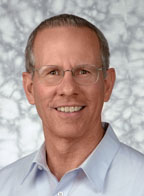This Podcast is was originally published on May 16, 2009, I have updated it with our new Podcast host information and I am representing it now. I hope you enjoy it, Joey
 Dennis Kesier, founder of Keiser Corporation and the Engineer of their M3 Indoor Cycling bike, joins me to talk about the physics of Indoor Cycling and to answer listener questions. Dennis does an excellent job of describing what is Power, how is it measured and many of the specific differences between an M3 and typical Indoor Cycling bikes that use friction to create resistance. This is a must listen if you are teaching on an M3 or are considering adding them to your fitness club.
Dennis Kesier, founder of Keiser Corporation and the Engineer of their M3 Indoor Cycling bike, joins me to talk about the physics of Indoor Cycling and to answer listener questions. Dennis does an excellent job of describing what is Power, how is it measured and many of the specific differences between an M3 and typical Indoor Cycling bikes that use friction to create resistance. This is a must listen if you are teaching on an M3 or are considering adding them to your fitness club.
Listen to the Podcast below or subscribe for free using iTunes or Zune. Here is a Step by Step Video that shows how to subscribe.
You can listen to us here:
iTunes:
Spotify:
Stitcher:
Google Play:
RadioPublic:
Pocket Casts:
PodBean:
TuneIn:
Podcast: Play in new window | Download
Originally posted 2019-05-24 09:00:13.

This was a really good show. I learned a lot. During the podcast it was mentioned that if you increase you speed on a spinner bike and not change the resistance, you are doing the same amount of work. However, your heart rate will climb and breathing will become stronger. I do understand that you are still pushing the pedals around using the same effort. SO I am not sure how these two statements fit together.
I also what to comment about creating circles. I believe this means creating push power throughout the entire pedal stoke on both sides. If so using a higher resistance with a little slower cadence, wouldn’t allow you to work a good circles.
Please let me know if I am in the wrong ballpark. Thanks
Thank you for catching this. We were so focused on the fact that the Force doesn’t get harder and may even get easier with increased Speed that I didn’t make clear what was happening to the work. Work = Force X Distance, and when more Work is done in a given time, more Power is produced and your heart rate goes up. Your heart rate is driven by the Power you are producing and an increased cadence with the same force will require you to produce more Power.
Where work remains constant is when we think of going from point A to point B pedaling at a given force. If Rider A goes from point A to point B in 30 minutes and Rider B does it in 60 minutes, both riders did the same amount of Work (providing the pedal force is the same), but Rider A produced double the Average Power, because Rider A did the same amount of Work in half the time.
I hope this helps.
Just finished listening to the podcast…great info! We have a studio full of Keiser bikes..new to us this fall, at one of the gyms where I teach! They are remarkably quiet..which is great since we do not have a headset! I have heard a lot of positive comments from our members about the bikes..and the computers as well. I love being able to refer to cadence without a cadence check/metronome! On the flip side, the handlebar adjustments are a bit tricky for some as they do move away from you as you bring them up….
but it seems to be an issue for just a couple of our riders thus far…and I do have other bikes to put them on!
Thanks again for another good show!
Annie
We have 21 Keiser bikes in our gym. The gym has been open for almost a year. And I’ve noticed that 6 bikes are starting to make noise within pedaling motion. And having just listened to your podcast, I was wondering what could be causing the noise. Thank you in advance for any help.